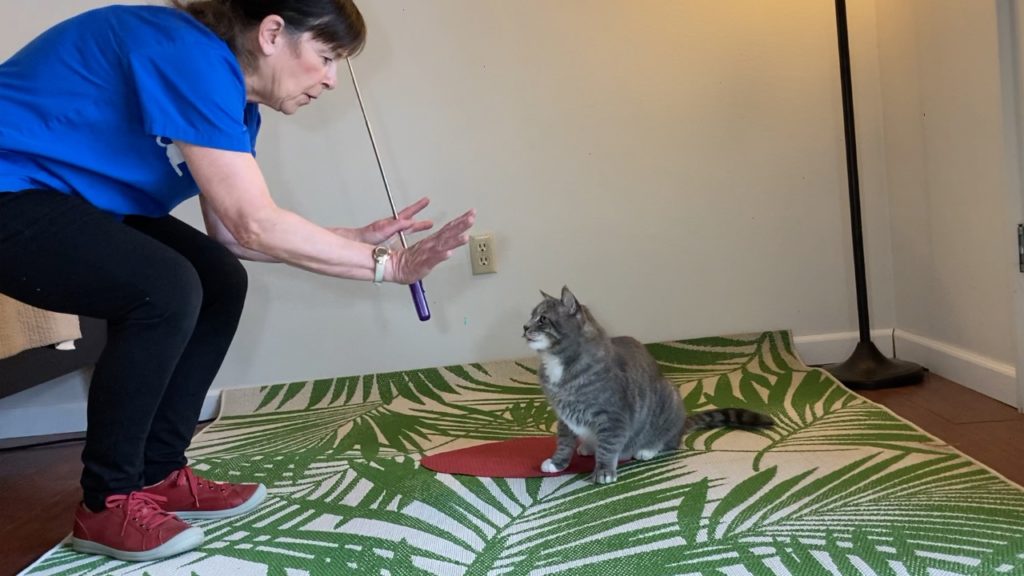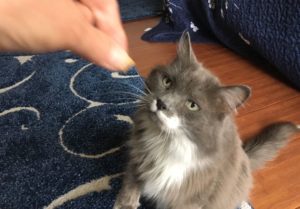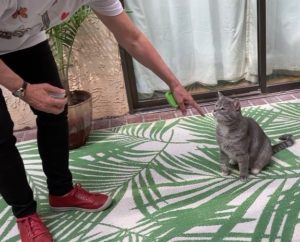To train your cat to do a new skill, you will need to set aside a time and decide what you are training that day. However, training should not always be something you do at a scheduled time with specific goals.
Training is a way of communicating with your cat, so training is a part of your cat’s day.
My kitties wake up to a medication session. My oldest cat, Athena, is medicated twice daily. After having Zelda, the Maine Coon, dive in, snatch and swallow Athena’s medication, I decided to make training work for me.
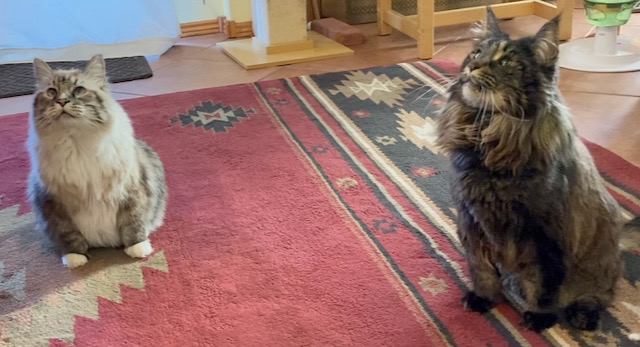
Medication Etiquette
- I prepare the medication (getting the treat box and wrapping the pill in a treat)
- Marley, Gus, and Zelda COME and SIT on the floor by the dining table.
- Athena is directed to the dining table.
- Marley, Gus and Zelda are then asked to STAY.
- Athena is given her tablet which she eats most of the time. If not, I give Marley, Gus and Zelda a REWARD and repeat the STAY command
- I take an extra minute to pill Athena.
- Marley, Gus and Zelda are REWARDED for the stay.
- Athena is REWARDED for taking her pill.
- I give all cats the ALL DONE signal.
The medication etiquette uses 4 skills the cats have learned.
- COME when called
- SIT
- STAY
- ALL DONE
It is a real time-saver when medication has to be given and I need to get to work.
Other times training is a part of your cat’s day…
Off the table!
You can ask your cat to move from place to place with your finger or a target stick. Let’s say that your cat jumps up on the table when you don’t want her to. You ask her to jump down; she does and gets rewarded with a treat.
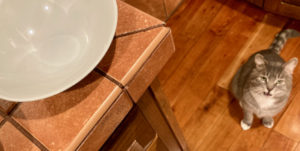
Sit and wait for dinner!
You can ask your cat to SIT and STAY when you are fixing his food. You may need a few treats to keep the STAY going until his dinner is ready.
Behavior when you don’t want it
Sometimes, you turn around in a minute or so, and your cat is back up on the table waiting to jump down and get a treat. When training, we repeat skills several times to see if kitty has gotten the idea. So, it is not all that surprising when kitty repeats his skills when not asked, hoping to cash in on more treats.
It may be better to ask him to jump down, treat, then have him sit and stay for the count of 5. Then, give him a treat and the all done signal to let him know the session is finished.
The all-done signal is very important – it means that you will walk away and there are no more treats for the moment.
